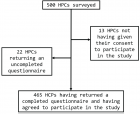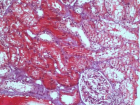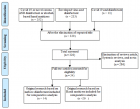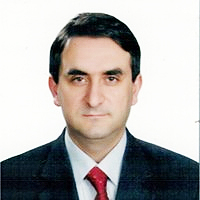Abstract
Review Article
Responding to Disasters: More than economic and infrastructure interventions
David Crompton OAM*, Ross Young, Jane Shakespeare-Finch and Beverley Raphael AM
Published: 24 April, 2018 | Volume 2 - Issue 1 | Pages: 014-028
Objectives: Natural disasters confront individuals, communities and governments with the challenge of rebuilding and addressing psychosocial sequelae. With the increasing number of natural disasters it is timely to evaluate the efficacy of interventions and strategies to address the mental health needs of individuals and the community.
Method: An evaluation of literature related to the psychological impact of natural disasters, treatment efficacy and government strategies to confront the social and psychological impact of natural disasters for the period 1983-2016 was undertaken.
Results: Epidemiological studies following natural disasters despite the use of differing psychological measures demonstrate significant psychological morbidity - anxiety (7-42%), complicated grief (28-41%), depression (6.5-38%), post-traumatic stress disorder (11-89%) and substance misuse (1.3-24%). Intervention studies post-disaster demonstrate efficacy variability.
Conclusions: The increase in the number and impact of meteorological and hydrological events since the 1980s and the psychological, social and economic consequences of these events has resulted in the development and implementation of government policies to confront the immediate and long-term adverse outcomes. The focus is typically on resources and infrastructure redevelopment with less focus on social and mental health interventions with long-term evaluation of interventions uncommon. The consequence of natural disasters emphasizes the importance developing strategies to ensure effective evaluated psychosocial interventions are available across at-risk communities.
Read Full Article HTML DOI: 10.29328/journal.ida.1001007 Cite this Article Read Full Article PDF
References
- Australian Emergency Management Institute. Disaster Health Handbook 1. Attorney-General, editor. Canberra: Commonwealth of Australia; 2011.
- Council of Australian Government. National Strategy for Disaster Resilience: Building our nation's resilience to disasters. Government CoA, editor. Canberra: Attorney-General; 2011.
- NSW Health and University of Western Sydney. NSW Health Disaster Mental Health Manual Sydney: New South Wales Government; 2012.
- Winkworth G. Disaster Recovery: A review of the literature. Dickson, ACT: Institute of Child Protection Studies. 2007. Ref.: https://goo.gl/mf87Cs
- Jin Y, Xu J, Liu D. The relationship between post traumatic stress disorder and post traumatic growth: Gender differences in PTG and PTSD subgroups. Social Psychiatry and Psychiatric Epidemiology. 2014; 49: 1903-1910. Ref.: https://goo.gl/xse4bb
- Becker AE, Kleinman AK. Mental health and the global agenda. The New England Journal of Medicine. 2013; 369: 66-73. Ref.: https://goo.gl/HViRyZ
- Cheng MH. Natural disasters highlight gaps in preparedness. The Lancet. 2009; 374: 1317-1318. Ref.: https://goo.gl/ioJDNX
- Bryant RA, Waters E, Gibbs L, Gallagher HC, Pattison P, et al. Psychological outcomes following the Victorian Black Saturday bushfires. Australian & New Zealand Journal of Psychiatry. 2014; 48: 634-643. Ref.: https://goo.gl/mwwXnR
- Cao H, McFarlane AC, Klimidis S. Prevalence of psychiatric disorder following the 1988 Yun Nan (China) earthquake-the first 5-month period. Social Psychiatry and Psychiatric Epidemiology. 2003; 38: 204-212. Ref.: https://goo.gl/8UL1j8
- Ohta Y, Araki K, Kawasaki N, Nakane Y, Honda S, et al. Psychological distress among evacuees of a volcanic eruption in Japan: A follow-up study. Psychiatry Clinical Neurosciences. 2003; 57: 105-111. Ref.: https://goo.gl/a8igsA
- McNally RJ. Progress and controversy in the study of posttraumatic stress disorder. Annual Review of Psychology. 2003; 54: 229-252. Ref.: https://goo.gl/q1dibT
- Boehnlein JK, Kinzie JD. Commentary. DSM Diagnosis of Posttraumatic Stress Disorder and Cultural Sensitivity: A Response. J Nervous Mental Disease. 1992; 180: 597-599. Ref.: https://goo.gl/K8Z5Nu
- Gersons BP, Carlier IV. Post-traumatic stress disorder: The history of a recent concept. Bri J Psychiatry. 1992; 161: 742-748. Ref.: https://goo.gl/zVrooD
- Parry-Jones B, Parry-Jones WL. Post-traumatic stress disorder: Supportive evidence from an eighteenth century natural disaster. Psychological Medicine. 1994; 24: 15-27. Ref.: https://goo.gl/vpGZP3
- Başoğlu M, Kılıç C, Şalcıoğlu E, Livanou M. et al. Prevalence of Posttraumatic Stress Disorder and Comorbid Depression in Earthquake Survivors in Turkey: An Epidemiological Study. J Traumatic Stress. 2004; 17: 133-141. Ref.: https://goo.gl/1bFJoP
- Chang MC, Chen PF, Lung FW. Anxiety in predicting suicide-related symptom of typhoon disaster victims: a one-year follow-up study in southern Taiwan. The Psychiatric quarterly. 2012; 83: 481-487. Ref.: https://goo.gl/ZrJFtZ
- Zhang Z, Wang W, Shi Z, Wang L, Zhang J. Mental health problems among the survivors in the hard-hit areas of the Yushu earthquake. PLoS ONE. 2012. Ref.: https://goo.gl/WdVwVo
- Norris FH, Murphy AD, Baker CK, Perilla JL. Postdisaster PTSD over four waves of a panel study of Mexico's 1999 flood. J Traumatic Stress. 2004; 17: 283-292. Ref.: https://goo.gl/1n2tmm
- Johannesson KB, Lundin T, Hultman CM, Lindam A, Dyster-Aas J, et al. The effect of traumatic bereavement on tsunami-exposed survivors. J Traumatic Stress. 2009; 22: 497-504. Ref.: https://goo.gl/AzpYnR
- Ali M, Farooq N, Bhatti MA, Kuroiwa C. Assessment of prevalence and determinants of posttraumatic stress disorder in survivors of earthquake in Pakistan using Davidson Trauma Scale. Journal of affective disorders. 2012; 136: 238-243. Ref.: https://goo.gl/MErxM7
- Zhang Y, Ho SMY. Risk factors of posttraumatic stress disorder among survivors after the 512 Wenchuan earthquake in China. PloS one. 2011; 6. Ref.: https://goo.gl/8cd1sa
- Boscarino Ja, Kirchner HL, Hoffman SN, Sartoius J, Adams RE. PTSD and alcohol use after the World Trade Center attacks: a longitudinal study. Journal of traumatic stress. 2011; 24: 515-525. Ref.: https://goo.gl/PSKRJp
- Nordløkken A, Pape H, Wentzel-Larsen T, Heir T. Changes in alcohol consumption after a natural disaster: A study of norwegian survivors after the 2004 southeast asia tsunami. BMC Public Health. 2013; 13: 58. Ref.: https://goo.gl/7F5z7k
- Cerdá M, Tracy M, Galea S. A prospective population based study of changes in alcohol use and binge drinking after a mass traumatic event. Drug and alcohol dependence. 2010; 115: 1-8. Ref.: https://goo.gl/9mzNzU
- North CS, Ringwalt CL, Downs D, Derzon J, Galvin D. Postdisaster course of alcohol use disorders in systematically studied survivors of 10 disasters. Archives of general psychiatry. 2011; 68: 173-180. Ref.: https://goo.gl/DJp9uU
- Chou YJ, Huang N, Lee CH, Tsai SL, Tsay JH, et al. Suicides after the 1999 Taiwan earthquake. International journal of epidemiology. 2003; 32: 1007-1014. Ref.: https://goo.gl/gn2ffs
- Maeda M, Oe M, Bromet E, Yasumura S, Ohto H. Fukushima, mental health and suicide. Journal of Epidemiology and Community Health, 2016; 70: Ref.: https://goo.gl/7XkbdZ
- Kõlves K, Kõlves KE, De LD. Natural disasters and suicidal behaviours: a systematic literature review. Journal of affective disorders. 2013; 146: 1-14. Ref.: https://goo.gl/mtkMAQ
- Krug EG, Kresnow MJ, Peddicord JP, Dahlberg LL, Powell KE, et al. Retraction: Suicide after natural disasters. The New England Journal of Medicine. 1999; 340: 148-149. Ref.: https://goo.gl/eokYC7
- Gordon KH, Bresin K, Dombeck J, Routledge C, Wonderlich Ja. The Impact of the 2009 Red River Flood on Interpersonal Risk Factors for Suicide. Crisis. 2011; 32: 52-55. Ref.: https://goo.gl/t8zsgL
- Harville EW, Taylor CA, Tesfai HT, Xiong X, Buekens P. Experience of Hurricane Katrina and reported intimate partner violence. J Interpersonal Violence. 2011; 26: 833-845. Ref.: https://goo.gl/GWoQ14
- Zahran S, Peek L, Snodgrass JG, Weiler S, Hempel L. Economics of Disaster Risk, Social Vulnerability, and Mental Health Resilience. Risk Analysis. 2011; 31: 1107-1119. Ref.: https://goo.gl/LsF49p
- Zotti ME, Williams AM, Robertson M, Horney J, Hsia J. Post-disaster reproductive health outcomes. Matern Child Health J. 2013; 17: 783-796. Ref.: https://goo.gl/ARdFZW
- Venn D. Helping displaced workers back into jobs after a natural disaster: Recent Experiences In Oecd Countries. 2012. Ref.: https://goo.gl/CenKX6
- Julca A. Natural disasters with un-natural effects: Why? J Economic Issues. 2012; 46: 499-510. Ref.: https://goo.gl/UByXnu
- Armaş I. Multi-criteria vulnerability analysis to earthquake hazard of bucharest, Romania. Natural Hazards. 2012; 63: 1129-1156. Ref.: https://goo.gl/gop5Pn
- Cerdá M, Vlahov D, Tracy M, Galea S. Alcohol use trajectories among adults in an urban area after a disaster: evidence from a population-based cohort study. Addiction. 2008; 103: 1296-1307. Ref.: https://goo.gl/nKtgRH
- Mason V, Andrews H, Upton D. The psychological impact of exposure to floods. Psychology, Health & Medicine. 2010; 15: 61-73. Ref.: https://goo.gl/ZYW3gL
- Ohl CA, Tapsell S. Flooding and human health. British Medical Journal. 2000; 321. Ref.: https://goo.gl/Swt82w
- Hobfoll SE, Watson P, Layne CM, Maguen S, Neria Y, et al. Five essential elements of immediate and mid-term mass trauma intervention: Empirical evidence. Psychiatry. 2007; 70: 283-315. Ref.: https://goo.gl/NYbhtU
- Psychosocial Care for People Affected by Disasters and Major Incidents; A Model for Designing, Delivering and Managing Psychosocial Services for People Involved in Major Incidents, Conflict, Disasters and Terrorism. North Atlantic Treaty Organization. 2008. Ref.: https://goo.gl/nsxj6f
- North CS, Pfefferbaum B. Mental health response to community disasters: A Systematic Review. 2013; 310: 507-518. Ref.: https://goo.gl/ZFdS1b
- Schoenbaum M, Butler B, Kataoka S, Norquist G, Springgate B, et al. Promoting mental health recovery after hurricanes katrina and rita: What could we done at what cost? Archives of general psychiatry. 2009; 66: 906-914. Ref.: https://goo.gl/mw9Qrc
- Ursano RJ, Fullerton CS, Weisaeth L, Raphael B. Textbook of disaster psychiatry. Cambridge University Press. 2017. Ref.: https://goo.gl/zRyNGQ
- Blumenfield M, Ursano RJ. Intervention and resilience after mass trauma. Cambridge University Press. 2008. Ref.: https://goo.gl/Srx367
- Gow K, Celinski MJ. Mass trauma: Impact and recovery issues. Nova Science Publishers. 2013. Ref.: https://goo.gl/Jh9cRP
- Whittle R, Walker M, Medd W, Mort M. Flood of emotions: Emotional work and long-term disaster recovery. Emotion, Space and Society. 2012; 51: 60-69. Ref.: https://goo.gl/3RDdWd
- Ehlers A, Hackmann A, Manley J, Brady F, Clark DM, et al. Implementation of cognitive therapy for PTSD in routine clinical care: Effectiveness and moderators of outcome in a consecutive sample. Behav Res Ther. 2013; 51: 742-752. Ref.: https://goo.gl/Afx5hz
- Gallagher MW, Payne LA, White KS, Shear KM, Woods SW, et al. Mechanisms of change in cognitive behavioral therapy for panic disorder: The unique effects of self-efficacy and anxiety sensitivity. Behav Res Ther. 2013; 51: 767-777. Ref.: https://goo.gl/riVDos
- Grist R, Cavanagh K. Computerised cognitive behavioural therapy for common mental health disorders, what works, for whom under what circumstances? A systematic review and meta-analysis. J Contemporary Psychotherapy. 2013; 43: 243-251. Ref.: https://goo.gl/G2ZXdM
- Ma SH, Teasdale JD. Mindfulness-based cognitive therapy for depression: Replication and exploration of differential relapse prevention effects. J Consult Clin Psychol. 2004; 72: 31-40. Ref.: https://goo.gl/Yh7JYH
- Jacobs GA. The development of a national plan for disaster mental health. Professional Psychology: Research and Practice. 1995; 26: 543-549. Ref.: https://goo.gl/qNmGDq
- Dieltjens T, Moonens I, Praet KV, Buck ED, Vandekerchove P. A systematic literature search on psychological first aid: Lack of evidence to develop guidelines. PLoS One. 2014; 9. Ref: https://goo.gl/aR1rnm
- Forbes D, Lewis V, Varker T, Phelps A, O’Donnell M, et al. Psychological first aid following trauma: Implementation and evaluation framework for high-risk organizations. Psychiatry. 2011; 74: 224-239. Ref.: https://goo.gl/JRVctn
- Ruzek JI, Brymer MJ, Jacobs AK, Layne CM, Vernberg EM, et al. Psychological first aid. J Mental Health Counseling. 2007; 29: 17-49. Ref.: https://goo.gl/fLHDk1
- Vernberg EM, Steinberg AM, Jacobs AK, Brymer MJ, Watson PJ, et al. Innovations in disaster mental health: Psychological first aid. Professional Psychology: Research and Practice. 2008; 39: 381-388. Ref.: https://goo.gl/5x9iHT
- Goenjian AK, Karayan I, Pynoos RS, Minassian D, Najarian LM, et al. Outcome of psychotherapy among early adolescents after trauma. Am J Psychiatry. 1997; 154: 536-542. Ref.: https://goo.gl/ArphxP
- Shooshtary MH, Panaghi L, Moghadam JA. Outcome of cognitive behavioral therapy in adolescents after natural disaster. J Adolesc Health. 2008; 42: 466-472. Ref.: https://goo.gl/FPKwpQ
- Başoğlu M, Livanou M, Şalcıoğlu E, Kalender D. A brief behavioural treatment of chronic post-traumatic stress disorder in earthquake survivors: results from an open clinical trial. Psychol Med. 2003; 33: 647-654. Ref.: https://goo.gl/Y6hLUw
- Bassilios B, Reifels L, Pirkis J. Enhanced primary mental health services in response to disaster. Psychiatric Services. 2012; 63: 868-874. Ref.: https://goo.gl/kBRLz7
- Norris FH, Friedman MJ, Watson PJ. 60,000 disaster victims speak: Part II. Summary and implications of the disaster mental health research. Psychiatry. 2002; 65: 240-260. Ref.: https://goo.gl/Ws1ctE
- Norris FH, Friedman MJ, Watson PJ, Byrne CM, Diaz E, et al. 60,000 disaster victims speak: Part I. An empirical review of the empirical literature, 1981-2001. Psychiatry. 2002; 65: 207-239. Ref.: https://goo.gl/bAzXL3
- Druss BG, Satcher D. Bridging Mental Health and Public Health. Prev Chronic Dis. 2010; 7. Ref.: https://goo.gl/V7N3QB
- Satcher D, Friel S, Bell R. Natural and Manmade Disasters and Mental Health. JAMA. 2007; 298: 2540-2542. Ref.: https://goo.gl/xiYWwN
- Johannesson KB, Michel PO, Hultman CM, Lindam A, Arnberg F, et al. Impact of exposure to trauma on posttraumatic stress disorder symptomatology in Swedish tourist tsunami survivors. J Nerv Ment Dis. 2009; 197: 316-323. Ref.: https://goo.gl/SjGrvt
- Planning for the psychosocial and mental health care of people affected by major incidents and disasters: Interim National Strategic Guidance. Ref.: https://goo.gl/n9gW7d
- The determinants of health Geneva. Ref.: https://goo.gl/wkcSpM
- Department of Health and Human Services. Mental Health All-Hazards Disaster Planning Guidance. Rockville: Center for Mental Health Services, Substance Abuse and Mental Health Services Administration. 2003. Ref.: https://goo.gl/TjdAUx
- Malilay J, Heumann M, Perrotta D, Wolkin AF, Schnall AH, et al. The role of applied epidemiology methods in the disaster management cycle. Am J Public Health. 2014; 104: 2092-2102. Ref.: https://goo.gl/M6r6Wv
- Reifels L, Naccarella L, Blashki G, Pirkis J. Examining disaster mental health workforce capacity. Psychiatry. 2014; 77: 199-205. Ref.: https://goo.gl/bD9S8T
- Logue JN. The public health response to disasters in the 21st century: reflections on Hurricane Katrina. J Environ Health. 2006; 69: 9-13. Ref.: https://goo.gl/EMAAeB
- Norris FH, Bellamy ND. Evaluation of a national effort to reach Hurricane Katrina survivors and evacuees: the crisis counseling assistance and training program. Adm Policy Ment Health. 2009; 36: 165-175. Ref.: https://goo.gl/szHKxe
- Zahran S, Brody SD, Peacock WG, Vedlitz A, Grover H. Social vulnerability and the natural and built environment: A model of flood casualties in texas. Disasters. 2008; 32: 537-560. Ref.: https://goo.gl/mjN5E2
- Victorian Bushfires Royal Commission. Victoria State Government. 2009. https://goo.gl/ff5QNg
- Caruana C. Picking up the pieces: Family functioning in the aftermath of natural disaster. Australian Government. 2010. Ref.: https://goo.gl/ZamQMf
- Berry HL, Hogan A, Owen J, Rickwood D, Fragar L. Climate change and farmers’ mental health: Risks and responses. Asia-Pacific J Public Health. 2011; 23: 119S-1132S. : https://goo.gl/9ZhAiS
- Disaster Health. Australian emergency management handbook and manual series. General A, editor. Canberra: Australian Government. 2011. 109.
- Queensland Government. Disaster Management Brisbane: Queensland Government; 2015. Queensland Government. 2013-2014 Queensland State Disaster Management Plan Brisbane. 2013.
- World Health Organisation. World Health Organisation Guidance for Health Sector Assessment to Support the Post Disaster Recovery Process. 2010. Ref.: https://goo.gl/7bwDAU
- Arklay T. Queensland's state disaster management group: An all agency response to an unprecedented natural disaster. Australian J Emergency Management. 2012; 27. Ref.: https://goo.gl/41qe2S
- Queensland floods 2011 Australia: Australian Red Cross; 2018.
- Australian Army. Operation Queensland Flood Assist 2011: Department of Defence; 2011.
- Queensland Reconstruction Authority. Queensland Reconstruction Authority Strategic Plan. 2012. Ref.: https://goo.gl/VdiWq6
- Queensland Reconstruction Authority. Queensland Reconstruction Authority Progress Report Brisbane Queensland Reconstruction Authority. 2013. Ref.: https://goo.gl/s2x2h4
- Wade D, Crompton D, Howard A, Stevens N, Metcalf O, et al. Evaluation of a post-disaster mental health training program. Disaster Health. 2015; 2: 138-145. Ref.: https://goo.gl/ZwHhNq
- Mc Dermott BM, Cobham VE. A stepped-care model of post-disaster child and adolescent mental health service provision. Eur J Psychotraumatology. 2014; 5. Ref.: https://goo.gl/ur1VES
- Raphael B, Dunsmore JC, Wooding S. Terror and trauma in bali: Australia's mental health disaster response. Haworth Maltreatment & Trauma Press. 2005; 9: 245-256. Ref.: https://goo.gl/B118id
- Reifels L, Pietrantoni L, Prati G, Kim Y, Kilpatrick DG, et al. Lessons learned about psychosocial responses to disaster and mass trauma: An international perspective. Eur J Psychotraumatology. 2013; 4. Ref.: https://goo.gl/ztbcKi
- Munich RE. Significant natural disasters since 1980: Munich Reinsurance America. 2014. Ref.: https://goo.gl/nEsYJ4
- Inter-Agency Standing Committee (IASC). IASC Guidelines on Mental Health and Psychosocial Support in Emergency Settings. 2007.
- GFDRR (Global Facility for Disaster Reduction and Recovery), Guide to developing disaster recovery frameworks. Sendai Conference; Washington DC: Global Facility for Disaster Reduction and Recovery. 2015. Ref.: https://goo.gl/61yVV5
- Roy C, Kovordányi R. Tropical cyclone track forecasting techniques - A review. Atmospheric Research. 2012; 104-105: 40-69. Ref.: https://goo.gl/7AidD6
- Zarnani A, Musilek P, Heckenbergerova J. Clustering numerical weather forecasts to obtain statistical prediction intervals. Meteorological Applications. 2014; 21: 605-618. Ref.: https://goo.gl/e7ekTF
- Neal J, Keef C, Bates P, Beven K, Leedal D. Probabilistic flood risk mapping including spatial dependence. Hydrological Processes. 2013; 27: 1349-1363. Ref.: https://goo.gl/KwCc8B
- Schröter K, Kreibich H, Vogel K, Riggelsen C, Scherbaum F, et al. How useful are complex flood damage models? Water Resources Research. 2014; 50: 3378-3395. Ref.: https://goo.gl/hYJSM5
- Stephens E, Cloke H. Improving flood forecasts for better flood preparedness in the UK (and beyond). Geographical J. 2014; 180: 310-316. Ref.: https://goo.gl/8ZpCZA
- Department of Natural Resources and Mines. Department of Natural Resources and Mines - Interactive Floodcheck map Brisbane: Queensland Government; 2015.
- Poompavai V, Murugaiya R. Geospatial analysis for coastal risk assessment to cyclones. J Indian Society Remote Sensing. 2013; 41. Ref.: https://goo.gl/JHgQ6U
- Honert RCVD, McAneney J. The 2011 brisbane floods: Causes, impacts and implications. Water. 2011; 3: 1149-1173. Ref.: https://goo.gl/nGSRKN
- Curtis A, Mills JW, Kennedy B, Fotheringham S, McCarthy T. Understanding the geography of Post‐Traumatic stress: An academic justification for using a spatial video acquisition system in the response to hurricane katrina. J Contingencies and Crisis Management. 2007; 15: 208-219. Ref.: https://goo.gl/RC5ZGJ
- Earnest A, Tan SB, Shahidah N, Ong ME. Geographical variation in ambulance calls is associated with socioeconomic status. Academic Emergency Medicine. 2012; 19: 180-188. Ref.: https://goo.gl/RNq2e4
- Salinas-Pérez JA, García-Alonso CR, Molina-Parrilla C, Jorda-Sampietro E, Salvador-Carulla L, et al. Identification and location of hot and cold spots of treated prevalence of depression in catalonia (Spain). Int J Health Geographics. 2012; 11. Ref.: https://goo.gl/VyLgc3
- Jagodic HK, Rokavec T, Agius M, Pregelj P. Availability of mental health service providers and suicide rates in slovenia: A nationwide ecological study. Croat Med J. 2013; 54: 444-452. Ref.: https://goo.gl/PYmcKA
- Aubrecht C, Özceylan D, Steinnocher K, Freire S. Multi-level geospatial modeling of human exposure patterns and vulnerability indicators. Natural Hazards. 2013; 68: 147-163. Ref.: https://goo.gl/d3atWU
- Gros DF, Price M, Gros KS, Paul LA, McCauley JL, et al. Relations between loss of services and psychiatric symptoms in urban and non-urban settings following a natural disaster. J Psychopathol Behav Assess. 2012; 34: 343-350. Ref.: https://goo.gl/PpfnEF
- Waring S, Zakos-Feliberti A, Wood R, Stone M, Padgett P, et al. The utility of geographic information systems (GIS) in rapid epidemiological assessments following weather-related disasters: Methodological issues based on the tropical storm allison experience. Int J Hygiene Environmental Health. 2005; 208: 109-116. Ref.: https://goo.gl/sWCpvZ
- Paranjothy S, Gallacher J, Amlôt R, Rubin GJ, Baxter T, et al. Psychosocial impact of the summer 2007 floods in England. BMC Public Health. 2011; 11: 145. Ref.: https://goo.gl/FtBpv5
- Kovačević-Majkić J, Panić M, Miljanović D, Miletic R. Vulnerability to natural disasters in serbia: Spatial and temporal comparison. Natural Hazards. 2014; 72: 945-968. Ref.: https://goo.gl/pfMfWc
- Balint L, Dome P, Daroczi G, Gonda X, Rihmer Z. Investigation of the marked and long-standing spatial inhomogeneity of the hungarian suicide rate: A spatial regression approach. J Affect Disord. 2014; 155: 180-185. Ref.: https://goo.gl/NFG4yq
- Norris FH, Rosen CS. Innovations in disaster mental health services and evaluation: National, state, and local responses to hurricane katrina (introduction to the special issue). Administration and Policy in Mental Health and Mental Health Services Research. 2009; 36: 159-164. Ref.: https://goo.gl/DW6KAP
- Kavanagh D. On Track Flood and Storm Recovery. Ref.: https://goo.gl/7riqWD
- Cobham V, Mc Dermott B, Sanders M. The development and evaluation of Disaster Recovery Triple P: After the disaster. 2011.
- University of Queensland. Natural disasters take an emotional toll on kids Washington DC. 2013.
- Choudhury WA. Quraishi FA, Haque Z. Mental health and psychosocial aspects of disaster preparedness in bangladesh. Int Rev Psychiatry. 2006; 18: 529-535. Ref.: https://goo.gl/s1N8Ge
- Raphael B, Ng CH. Disaster mental health preparedness and response: Asia‐Pacific perspectives. Asia‐Pacific Psychiatry. 2011; 3: 163-166. Ref.: https://goo.gl/BTzKmw
- Dominici F, Levy JI, Louis TA. Methodological challenges and contributions in disaster epidemiology. Epidemiol Rev. 2005; 27: 9-12. Ref.: https://goo.gl/M54rSw
- Bisson JI, Tavakoly B, Witteveen AB, Ajdukovic D, Jehel L, et al. TENTS guidelines: Development of post-disaster psychosocial care guidelines through a delphi process. Br J Psychiatry. 2010; 196: 69-74. Ref.: https://goo.gl/181hmh
- Australian Centre for Posttraumatic Mental Health. Recovery (SPR) Training and Support Program: Final Report for Queensland Health. Melbourne: ACPMH; 2013.
- Witteveen AB, Bisson JI, Ajdukovic D, Arnberg FK, Johannesson KB, et al. Post-disaster psychosocial services across Europe: The TENTS project. Social Science & Medicine. 2012; 75: 1708-1714. Ref.: https://goo.gl/D2TJgU
- Stein DJ, Friedman MJ, Blanco C. Disaster public mental health. Chichester, UK: John Wiley & Sons, Ltd. 2011.Ref.: https://goo.gl/pN84cy
- Queensland: Recovery and Reconstruction in the Aftermath of the 2010/2011 Flood Events and Cyclone Yasi. Brisbane: Queensland Government; 2011. Ref.: https://goo.gl/a3xtnc
Figures:

Figure 1
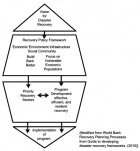
Figure 2

Figure 3
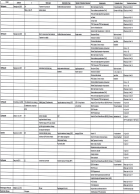
Figure 4
Similar Articles
-
Burnout and Related Factors in Caregivers of outpatients with SchizophreniaHatice Demirbas*,Erguvan Tugba Ozel Kizil. Burnout and Related Factors in Caregivers of outpatients with Schizophrenia. . 2017 doi: 10.29328/journal.hda.1001001; 1: 001-011
-
Multi-factorial Depressive Disorders Need Multi-dimensional InterventionsMustafa Melih Bilgi*. Multi-factorial Depressive Disorders Need Multi-dimensional Interventions. . 2017 doi: 10.29328/journal.hda.1001002; 1: 012-014
-
Anxiety and depression as an effect of birth order or being an only child: Results of an internet survey in Poland and GermanyJochen Hardt*,Lisa Weyer,Malgorzata Dragan,Wilfried Laubach. Anxiety and depression as an effect of birth order or being an only child: Results of an internet survey in Poland and Germany. . 2017 doi: 10.29328/journal.hda.1001003; 1: 015-022
-
Spiritual and religious Islamic perspectives of healing of posttraumatic stress disorderMevludin Hasanović*,Izet Pajević,Osman Sinanović. Spiritual and religious Islamic perspectives of healing of posttraumatic stress disorder. . 2017 doi: 10.29328/journal.hda.1001004; 1: 023-029
-
May we feed cancer?Maria Grazia Spurio*. May we feed cancer?. . 2018 doi: 10.29328/journal.ida.1001005; 2: 001-006
-
Vestibular-limbic relationships: Brain mappingPaolo Gamba*. Vestibular-limbic relationships: Brain mapping. . 2018 doi: 10.29328/journal.ida.1001006; 2: 007-013
-
Responding to Disasters: More than economic and infrastructure interventionsDavid Crompton OAM*,Ross Young,Jane Shakespeare-Finch,Beverley Raphael AM. Responding to Disasters: More than economic and infrastructure interventions. . 2018 doi: 10.29328/journal.ida.1001007; 2: 014-028
-
Mindset kinetics and some depression status: A new quantitative model under biochemical - toxicology approach?Luisetto M*,Ghulam Rasool Mashori,Behzad Nili-Ahmadabadi,Farhan Ahmad Khan,Kausar Rehman Khan. Mindset kinetics and some depression status: A new quantitative model under biochemical - toxicology approach?. . 2018 doi: 10.29328/journal.ida.1001008; 2: 029-039
-
Anti-anxiety effects in mice following acute administration of Ficus Thonningii (wild fig)Aduema W*,Akunneh-Wariso C,Ejiofo DC,Amah AK. Anti-anxiety effects in mice following acute administration of Ficus Thonningii (wild fig). . 2018 doi: 10.29328/journal.ida.1001009; 2: 040-047
-
Sleeplessness and healthSunitha V,Jeyastri Kurushev,Felicia Chitra,Manjubala Dash*. Sleeplessness and health. . 2019 doi: 10.29328/journal.ida.1001010; 3: 001-007
Recently Viewed
-
A possible Etiology and new treatment of Burning Mouth Syndrome and allied conditionSudhakar Pattanaik*. A possible Etiology and new treatment of Burning Mouth Syndrome and allied condition. Adv Treat ENT Disord. 2017: doi: 10.29328/journal.ated.1001001; 1: 001-005
-
Changes in the frequency and intensity of Tinnitus using the Suppressive Noise SpectrumMing Zhang*,Alysia Jeske,Sarah Young. Changes in the frequency and intensity of Tinnitus using the Suppressive Noise Spectrum. Adv Treat ENT Disord. 2017: doi: 10.29328/journal.ated.1001002; 1: 006-012
-
Practical implementation of the SWEEP-session of Stimulation-Registration in CI fittingPetrov SM*. Practical implementation of the SWEEP-session of Stimulation-Registration in CI fitting. Adv Treat ENT Disord. 2017: doi: 10.29328/journal.ated.1001003; 1: 013-015
-
For professionals working on the topic of cochlear implantation: Opinions of readers of “Instruction” and participants of MIMICPetrov SM*. For professionals working on the topic of cochlear implantation: Opinions of readers of “Instruction” and participants of MIMIC. Adv Treat ENT Disord. 2018: doi: 10.29328/journal.ated.1001004; 2: 001-005
-
Recent advances in pathophysiology and management of subglottic HemangiomaMohamed Khamis Tolba Mahmoud Abdalla*. Recent advances in pathophysiology and management of subglottic Hemangioma. Adv Treat ENT Disord. 2018: doi: 10.29328/journal.ated.1001005; 2: 006-007
Most Viewed
-
Impact of Latex Sensitization on Asthma and Rhinitis Progression: A Study at Abidjan-Cocody University Hospital - Côte d’Ivoire (Progression of Asthma and Rhinitis related to Latex Sensitization)Dasse Sery Romuald*, KL Siransy, N Koffi, RO Yeboah, EK Nguessan, HA Adou, VP Goran-Kouacou, AU Assi, JY Seri, S Moussa, D Oura, CL Memel, H Koya, E Atoukoula. Impact of Latex Sensitization on Asthma and Rhinitis Progression: A Study at Abidjan-Cocody University Hospital - Côte d’Ivoire (Progression of Asthma and Rhinitis related to Latex Sensitization). Arch Asthma Allergy Immunol. 2024 doi: 10.29328/journal.aaai.1001035; 8: 007-012
-
Causal Link between Human Blood Metabolites and Asthma: An Investigation Using Mendelian RandomizationYong-Qing Zhu, Xiao-Yan Meng, Jing-Hua Yang*. Causal Link between Human Blood Metabolites and Asthma: An Investigation Using Mendelian Randomization. Arch Asthma Allergy Immunol. 2023 doi: 10.29328/journal.aaai.1001032; 7: 012-022
-
An algorithm to safely manage oral food challenge in an office-based setting for children with multiple food allergiesNathalie Cottel,Aïcha Dieme,Véronique Orcel,Yannick Chantran,Mélisande Bourgoin-Heck,Jocelyne Just. An algorithm to safely manage oral food challenge in an office-based setting for children with multiple food allergies. Arch Asthma Allergy Immunol. 2021 doi: 10.29328/journal.aaai.1001027; 5: 030-037
-
Snow white: an allergic girl?Oreste Vittore Brenna*. Snow white: an allergic girl?. Arch Asthma Allergy Immunol. 2022 doi: 10.29328/journal.aaai.1001029; 6: 001-002
-
Cytokine intoxication as a model of cell apoptosis and predict of schizophrenia - like affective disordersElena Viktorovna Drozdova*. Cytokine intoxication as a model of cell apoptosis and predict of schizophrenia - like affective disorders. Arch Asthma Allergy Immunol. 2021 doi: 10.29328/journal.aaai.1001028; 5: 038-040

If you are already a member of our network and need to keep track of any developments regarding a question you have already submitted, click "take me to my Query."






